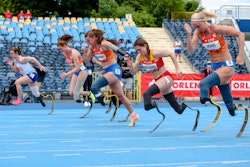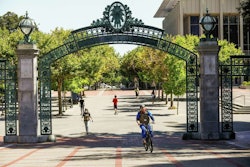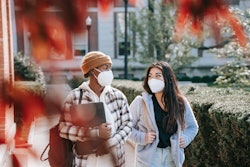MINNEAPOLIS — When she was 6 or 7, Mona Minkara’s eyesight began to fade.
Eventually diagnosed with macular degeneration and cone rod dystrophy, the post-doctoral research fellow in the University of Minnesota’s chemistry department is now working to create a STEM curriculum for blind children in developing countries, the Minnesota Daily reported.
Minkara, is creating the curriculum with the help of her assistants, who aide her in her computational chemistry research. She studies surfactants — molecules with one end that is attracted to water and another end that is not.
Minkara said she wants the STEM curriculum to be blind-accessible and low-cost. It will be implemented at a camp in Lebanon that has programs for both blind and sighted children.
The camp trains blind children in life skills and integrates them with sighted children through sports and artistic activities. Minkara’s sister started the camp in 2009.
“We would love for them to consider the option or possibility that maybe one day they could become scientists,” she said of blind children.
Minkara said most blind-accessible curricula are expensive and her team wanted to create a way to translate visual science experiments into something blind students can understand.
“What can we do to open up — no pun intended — these kids’ eyes to science?” she said. “It was an interesting process.”
The team of four is raising money to travel to Lebanon in July so they can teach the curriculum to camp volunteers.
Connor Venteicher, a recent chemistry graduate, works as Minkara’s full-time access assistant and helps her with anything pertaining to her research in computational chemistry.
Venteicher is also helping develop the curriculum, and said he looked to elementary school science projects to create activities for the camp, called Empowerment Through Integrity.
“The real challenge was getting it to be less visual than it usually is,” Venteicher said, adding that he and other assistants put on blindfolds and tried to build a volcano out of clay, baking soda and vinegar to see how classic science projects could be adapted for blind children. “I was able to feel the warmth of it when it was heating up and felt the foam coming out the top.”
Robert Hembree, a post-doctoral researcher in the computational chemistry lab, said the biggest challenge was turning visual science — such as chemistry, which is based on diagrams and experiments — into something blind children can understand.
“Everything about the way people approach it is visual,” he said. “You have to translate that into sounds, feelings, tastes, smells.”
Minkara was born in Maryland to immigrants from Lebanon. Though her parents wanted to return to Lebanon, they stayed in the United States with the hope of a better education for Minkara, whose sight was quickly disappearing.
Minkara became interested in chemistry in her elementary and high school years because she was interested in how the world works.
“Even though I’m blind, I’m a very visual learner,” she said. “Yeah, ironic, I know.”
Committed teachers and a strong interest in science pushed Minkara to construct models of molecules with her hands and trace diagrams in order to learn concepts, she said.
Minkara graduated from Wellesley College in 2009 with a dual degree in chemistry and Middle Eastern studies, received her Ph.D. from the University of Florida and took a research position at the University a year and a half ago.
Minkara is legally blind, with 2 percent vision in her left eye and some light perception in her right eye.
“I think the biggest obstacle would be to be on the receiving end of pity,” she said of her blindness. “It inhibits learning. It inhibits believing in yourself.”
![Screenshot 2024 06 05 141719[91541]](https://img.diverseeducation.com/files/base/diverse/all/image/2024/06/Screenshot_2024_06_05_141719_91541_.66613a2803b85.png?auto=format%2Ccompress&fit=crop&h=107&q=70&w=160)
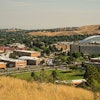
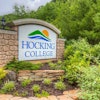
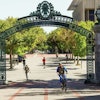

![Screenshot 2024 06 05 141719[91541]](https://img.diverseeducation.com/files/base/diverse/all/image/2024/06/Screenshot_2024_06_05_141719_91541_.66613a2803b85.png?auto=format%2Ccompress&fit=crop&h=167&q=70&w=250)
